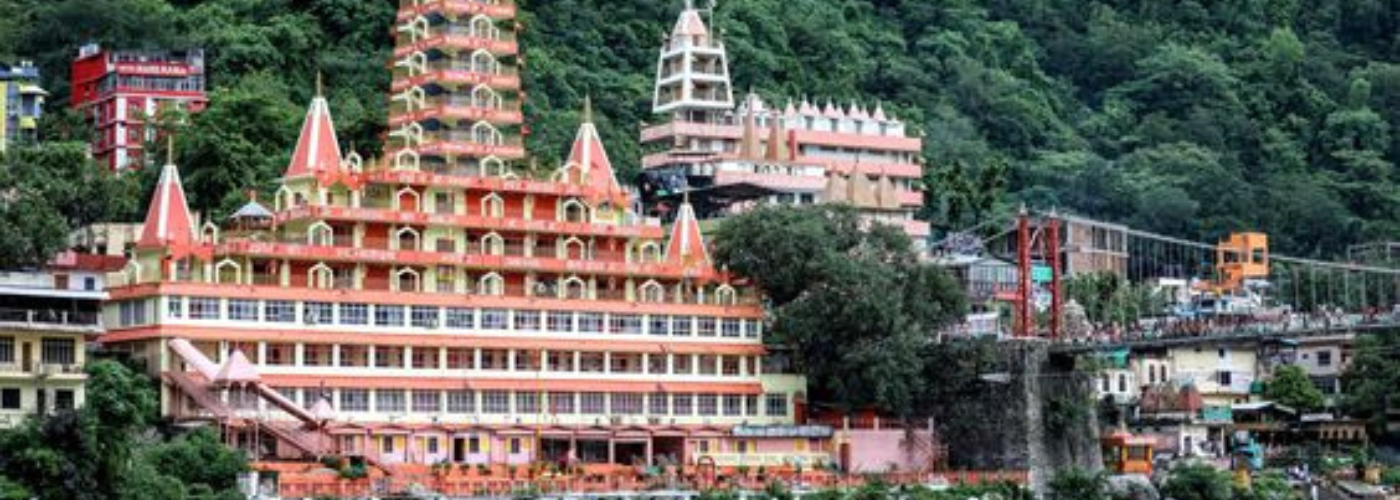

History of Rishikesh: The Sacred Gateway to the Himalayas
Rishikesh, located in the northern state of Uttarakhand, India, is a serene town set against the backdrop of the Himalayan foothills and along the banks of the sacred Ganges River. Renowned worldwide as a center for spirituality and yoga, Rishikesh has a rich history that intertwines mythological significance, ancient traditions, and modern-day global appeal. The town is often referred to as the “Yoga Capital of the World” and continues to be a beacon for spiritual seekers, travelers, and adventurers alike.
Mythological Origins
The roots of Rishikesh are steeped in Hindu mythology. The name “Rishikesh” comes from the Sanskrit term “Hrishikesha,” meaning “Lord of the Senses,” an epithet of Lord Vishnu. According to ancient legends, a great sage named Raibhya Rishi performed intense penance (tapasya) on the banks of the Ganges. Pleased with his devotion, Lord Vishnu appeared before him in the form of Hrishikesha. As a result, the area came to be known as Rishikesh.
Another popular mythological story links Rishikesh to the epic Ramayana. It is believed that Lord Rama, after defeating the demon king Ravana, came to Rishikesh to meditate and seek penance for his actions during the war. His younger brother, Lakshmana, is said to have crossed the Ganges at the point now marked by the famous Lakshman Jhula, a suspension bridge that has become one of the town’s most iconic landmarks.
Ancient and Medieval History
Rishikesh’s history can be traced back to the ancient Vedic era. Mentioned in numerous scriptures such as the Vedas, Puranas, and Upanishads, Rishikesh has long been a favored destination for sages and spiritual seekers. The dense forests and proximity to the Himalayas provided the perfect setting for meditation and introspection, making it a hub for ashrams (spiritual retreats) and centers of learning.
The Puranas also mention Rishikesh as part of the region known as “Kedarkhand,” which included other nearby religious sites like Haridwar, Kedarnath, and Badrinath. These areas were collectively seen as gateways to divine realms and spiritual enlightenment.
During the medieval period, Rishikesh continued to serve as a vital religious center, with various saints and scholars establishing ashrams and schools of thought here. The town remained relatively remote and untouched, attracting only devout pilgrims who ventured into the forests for penance and knowledge.
Rishikesh in Modern Times
In the 19th and early 20th centuries, Rishikesh began to gain attention from spiritual leaders, philosophers, and travelers from all over India. The establishment of Swarg Ashram in the 1920s, located between Lakshman Jhula and Ram Jhula, became a prominent center for meditation and spiritual learning, further cementing Rishikesh’s status as a spiritual destination.
The modern fame of Rishikesh, however, skyrocketed in the 1960s with the arrival of the legendary British rock band, The Beatles. In 1968, they visited Maharishi Mahesh Yogi’s ashram (now popularly known as the Beatles Ashram) to learn Transcendental Meditation. Their visit brought global attention to Rishikesh, attracting a wave of Western visitors interested in yoga, meditation, and Indian spirituality.
This cultural exchange laid the foundation for Rishikesh’s transformation into an international hub for yoga. Today, the town is home to numerous yoga schools and ashrams, where thousands of people come every year to learn traditional yoga practices and meditation techniques. The International Yoga Festival, held annually in Rishikesh, attracts practitioners and teachers from around the world, highlighting the town’s prominent role in the global yoga community.
Sacred Sites and Pilgrimage
Rishikesh has long been part of the revered Char Dham Yatra, a pilgrimage route that includes Kedarnath, Badrinath, Gangotri, and Yamunotri, four of the most sacred Hindu temples in the Himalayas. Pilgrims stop at Rishikesh on their way to these holy sites, and the town is considered a spiritual gateway to these higher Himalayan shrines.
One of the town’s most important religious sites is the Triveni Ghat, where pilgrims perform ritual bathing and other ceremonies. The ghat is particularly famous for the Ganga Aarti, a daily evening ritual where priests offer prayers and light lamps to the river goddess, Ganga. This beautiful ceremony, accompanied by chanting and devotional songs, draws both locals and tourists alike, creating a powerful spiritual atmosphere.
Other notable religious landmarks in Rishikesh include the Neelkanth Mahadev Temple, located about 30 kilometers from the town, and dedicated to Lord Shiva. The temple is set amidst lush green hills and is believed to be the spot where Lord Shiva consumed poison during the churning of the ocean (Samudra Manthan) to save the universe from destruction.
Yoga and Wellness Capital
While Rishikesh has always been a center for spiritual practices, it has also evolved into the world’s foremost destination for yoga and wellness. As the “Yoga Capital of the World,” Rishikesh offers a wide range of yoga styles, meditation techniques, and Ayurvedic treatments, attracting wellness enthusiasts from all corners of the globe.
Several renowned ashrams, such as the Parmarth Niketan Ashram and the Yoga Niketan, provide residential programs in yoga, meditation, and spiritual growth. Rishikesh’s emphasis on holistic living, combined with its natural beauty and sacred surroundings, makes it the perfect place for those seeking inner peace and wellness.
Adventure and Tourism
In recent decades, Rishikesh has also become an adventure tourism hotspot, drawing thrill-seekers interested in activities like white-water rafting, bungee jumping, trekking, and camping. The fast-flowing Ganges, particularly in the stretch between Rishikesh and Shivpuri, offers some of the best rafting experiences in India. This combination of spiritual heritage and adventure sports has made Rishikesh a unique destination that caters to both the soul and the body.